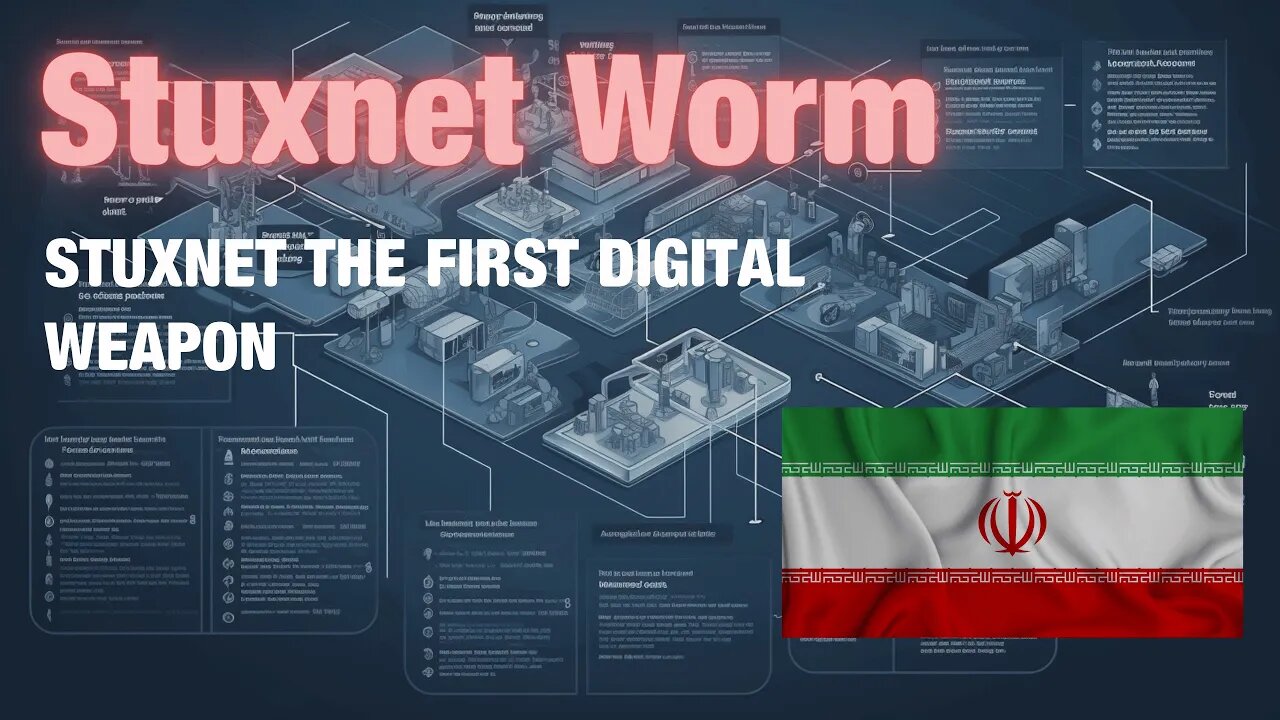Premium Only Content

Stuxnet the First Digital Weapon
Stuxnet, the first digital weapon, was a groundbreaking computer worm that targeted Iran's nuclear program. Developed through a collaboration between the United States and Israel, Stuxnet aimed to disrupt Iran's uranium enrichment activities by targeting centrifuges' control systems.
The worm exploited vulnerabilities in the SCADA systems, which control and monitor industrial processes. It spread through infected USB drives and utilized a combination of zero-day exploits and rootkit functionality to infect computers and remain undetected. Stuxnet's self-replication capabilities allowed it to spread across networks and infect new machines.
Once inside the targeted systems, Stuxnet covertly manipulated the centrifuge speeds, causing physical damage and malfunctions. Its purpose was to sabotage Iran's nuclear program without direct military intervention. Stuxnet demonstrated the potential of cyber weapons to impact physical infrastructure and highlighted the vulnerabilities of critical systems to cyberattacks.
The discovery of Stuxnet in 2010 raised awareness about the significant impact of cyber warfare. It served as a wake-up call for governments and organizations worldwide, highlighting the need for improved cybersecurity and defensive measures. Stuxnet ushered in a new era of state-sponsored cyber operations, with nations investing in developing cyber weapons and offensive capabilities.
The Stuxnet incident also raised concerns about cyber weapon proliferation and potential misuse. Its success demonstrated the potential for cyberattacks to cause physical damage and disrupt critical infrastructure, extending the scope of warfare beyond traditional military means.
Today, Stuxnet remains a significant case study in cyber warfare. It serves as a reminder of the evolving threats in the digital age and the importance of robust cybersecurity measures to safeguard critical systems from cyberattacks.
-
 LIVE
LIVE
Common Threads
3 hours agoLIVE DEBATE: Will Democrats Roll Over or Fight Back?
132 watching -
 54:47
54:47
LFA TV
9 hours agoDonald Trump Sets Israel Up for Failure | TRUMPET DAILY 1.23.25 7pm
5.28K13 -

Sarah Westall
2 hours agoPsychological Warfare, Modern Weapons of War, Panama Canal, Special Ops & more w/ Michael Yon
13.9K2 -
 46:56
46:56
Chrissy Clark
2 hours agoTrump Responds To Woke Bishop, Cardi B’s TikTok FAIL, & MORE I Underreported Stories
8.69K1 -
 1:01:16
1:01:16
theDaily302
12 hours agoThe Daily 302 - Colonel Roxane Towner Watkins
5.61K -
 LIVE
LIVE
BlackDiamondGunsandGear
8 hours agoLIVE SHOT SHOW 2025 COVERAGE w/ DLD After Dark
173 watching -
 2:36:32
2:36:32
Omar Elattar
5 hours agoEx-Arms Dealer: "How I Won A $300M Pentagon Contract At 24 & Inspired War Dogs"
14.1K -
 1:20:25
1:20:25
Game On!
4 hours ago $0.43 earnedPUMP THE BRAKES! Patrick Mahomes will NEVER be Tom Brady!
12.5K3 -
 1:04:14
1:04:14
In The Litter Box w/ Jewels & Catturd
1 day agoBorder Is Closed | In the Litter Box w/ Jewels & Catturd – Ep. 726 – 1/23/2025
91.8K21 -
 1:41:52
1:41:52
The Quartering
7 hours agoDemonic Visitors, ICE Raids Begin, Brett Cooper Drama, Trump Vs Woke Bank, MSM Helping Illegals!
105K28